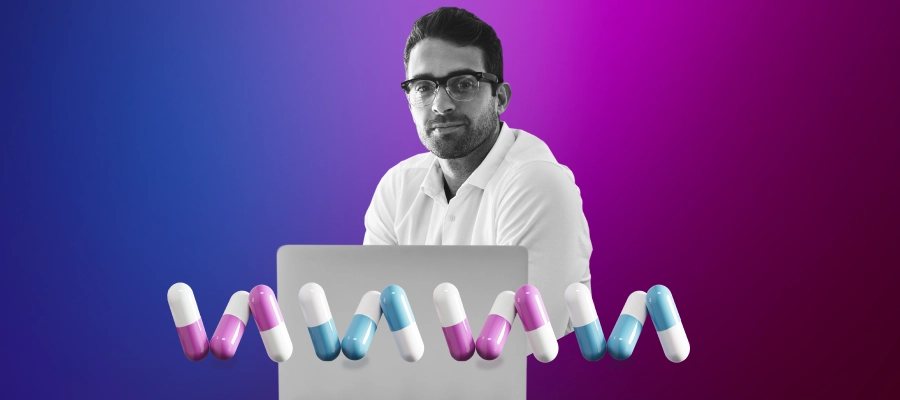
GxP Lifeline
Top Nutraceutical Trends and Manufacturing Solutions: A Comprehensive Guide

The nutraceutical industry continues to evolve rapidly, with manufacturers facing new challenges and opportunities. From innovative delivery methods to sustainable packaging, these nutraceutical trends are reshaping how supplements are developed, manufactured, and marketed. Let's explore the key trends and how modern nutraceutical manufacturing software can help companies stay competitive.
Innovative Delivery Methods
The traditional large pill format is giving way to more consumer-friendly alternatives. Manufacturers are exploring various delivery methods including chewables, powders, liquids, lotions, sprays, gums, and drops. This shift presents both opportunities and challenges—while new formats may improve absorption and consumer compliance, they require careful formulation and testing to ensure safety and efficacy.
Want to learn how one manufacturer modernized their operations? Download our Q&A: "Nutrawise Health & Beauty's Journey to Electronic Logbooks" to discover their success story.
Clinical Trials and Quality Assurance
More nutraceutical companies are conducting clinical trials to validate their products' effectiveness. While not required for compliance, clinical trials provide a competitive advantage and help substantiate marketing claims. However, the documentation requirements are substantial, necessitating robust nutraceutical manufacturing software to manage trial data and ensure compliance.
Functional Foods and Beverages
The line between supplements and functional foods continues to blur. Manufacturers are incorporating nutraceutical ingredients into snacks, beverages, and other food products. This trend requires careful attention to U.S. Food and Drug Administration (FDA) regulations regarding food versus supplement classification and appropriate labeling requirements.
Sustainable Packaging Initiatives
Environmental concerns are driving manufacturers to reduce plastic usage and explore sustainable packaging alternatives. Companies are investigating biodegradable materials, reducing packaging waste, and implementing recycling programs. These initiatives require careful documentation and process control to maintain product stability and safety.
Cannabis and Cannabidiol (CBD) Products
The cannabis/CBD market represents a significant opportunity, though regulatory challenges persist. Manufacturers must carefully navigate varying state and federal regulations while maintaining strict quality control standards.
Quality Management in Manufacturing
Successful implementation of these trends requires robust quality management systems. Modern nutraceutical manufacturing software helps companies:
- Manage documentation for new delivery methods.
- Track clinical trial data.
- Ensure regulatory compliance.
- Control manufacturing processes.
- Maintain supplier quality.
- Implement sustainable practices.
Want to see how electronic systems can transform your operations? Download our Q&A: "Nutrawise Health & Beauty's Journey to Electronic Logbooks" for real-world insights.
Digital Transformation Solutions
MasterControl's Manufacturing Excellence and Quality Excellence solutions help nutraceutical manufacturers address these trends through:
- Electronic batch records.
- Digital document control.
- Automated change management.
- Supplier quality management.
- Training tracking.
- Clinical trial documentation.
- Compliance monitoring.
These solutions enable manufacturers to:
- Reduce review time.
- Eliminate paper-based processes.
- Ensure consistent quality.
- Speed time to market.
- Maintain regulatory compliance.
- Track sustainability initiatives.
Market Evolution and COVID-19 Impact
The pandemic accelerated certain trends while creating new challenges. Online sales have increased, while brick-and-mortar sales have declined. Consumer focus has shifted toward immune health and overall wellness, requiring manufacturers to adapt formulations and marketing strategies.
Ready to modernize your manufacturing operations? Download our Q&A: "Nutrawise Health & Beauty's Journey to Electronic Logbooks" to learn how one company successfully made the transition.
Looking Ahead
The nutraceutical industry continues to evolve rapidly. Success requires manufacturers to:
- Embrace innovation in delivery methods.
- Implement robust quality management systems.
- Ensure regulatory compliance.
- Adopt sustainable practices.
- Leverage digital solutions.
Manufacturers who implement comprehensive nutraceutical manufacturing software solutions are better positioned to:
- Adapt to market changes.
- Maintain quality standards.
- Ensure compliance.
- Improve efficiency.
- Drive innovation.
Want to learn more about modernizing your manufacturing operations? Download our Q&A: "Nutrawise Health & Beauty's Journey to Electronic Logbooks" at https://www.mastercontrol.com/resource-center/manufacturing-logbook-management-q-and-a-nutrawise/
The nutraceutical industry's future belongs to manufacturers who can successfully balance innovation, quality, and compliance. Modern manufacturing and quality management solutions provide the foundation needed to thrive in this dynamic market. By implementing comprehensive digital solutions, manufacturers can stay ahead of trends while maintaining the highest standards of quality and compliance.
Free Resource

Enjoying this blog? Learn More.
Logbooks Q&A: Nutrawise Health & Beauty’s Journey to Electronic Logbook
Download Now